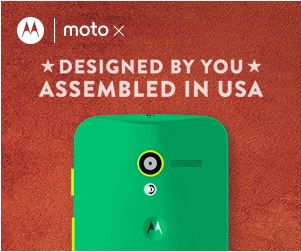How Porn and Ecommerce Became Friends

Good online advertising provokes. Everyone knows this. The real question is how?
Anger? Humor? Bliss? Shock? Arousal? Strong emotions drive action, yet all too often online advertisers neglect this truth and instead come up with bland, underwhelming messages that get lost in the white noise and clutter of the internet.
As proof, I went straight to Gawker, a hugely popular blog, to seek out any ads that popped up and these were basically the only 2 I saw: (You’re welcome for the plug AmEx and Motorola)
 &
& 
What we see are surprisingly dull ads from major companies that certainly have the budget and talent to do better. The bottom line is that we’ve been conditioned to not pay attention to these ads. I bet you even felt compelled to automatically scroll past these because you immediately recognized them as ads.
The lesson learned here? Boring ads are gonna bore.
On the other end of the advertising spectrum, we have Top 500 retailer American Apparel and their controversial yet effective online banner ads.
The mere fact that I felt compelled to write this post and give them further exposure is testament to their effectiveness. American Apparel advertises their products often using nude models with only a few articles of AA clothing on (considered pornography by many). You can view a medley of their provocative ads on BuzzFeed to see what I’m talking about (pretty NSFW).
The funny thing about these online ads is that in many cases, they’ve made people angry or appalled, yet nevertheless, it’s been great business for the retailer. American Apparel Director of Marketing, Ryan Holiday (a marketing genius IMO), explains: (<<you should read this post when you get a chance)
“For instance, look at these ads of Sasha Grey (link removed). She doesn’t even have any product on (well, except socks)! But they provoke sharing, and were ultimately seen by many many more people than a tame ad would have been.
The internet is a hungry beast that needs material: FB and Twitter don’t feed themselves. Armed with data that shows a direct correlation between chatter about products and sales spikes, I used emotion-provoking advertising to grow American Apparel’s online sales from $40 million to $60+ million per year.“
The lesson learned here? High-valence emotions like anger (or bliss or shock) provoke action. In the internet space, that action is dominantly sharing. People got so worked up about these ads, or at least felt like they could write a story about it, that the ads ended up being posted and re-posted, working their way up to major blogs like Buzzfeed, Gawker, Huffington Post, and even Business Insider. That’s huge exposure and best yet, it’s FREE.
American Apparel was bold enough to marry nudity (arguably pornography) and effective ecommerce strategy on a mainstream level. Yet the truth is that not everyone’s going to get away with advertising their products with naked ladies. It’s risky and profoundly effects brand perception. Besides, if everyone started doing it, it wouldn’t be news anymore.
BUT, that doesn’t stop retailers from being able to try something new. Don’t be satisfied with a finished product like the AmEx and Motorola ads above. Truth is, a good ad doesn’t even look like an ad on the surface level. After all, today’s internet culture rewards high risk and abnormalities.
If you can master the art of provocation with your online ads, your potential for ecommerce success is boundless.
